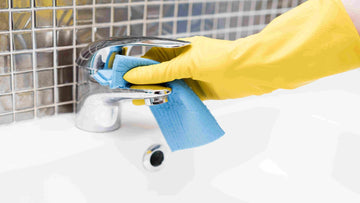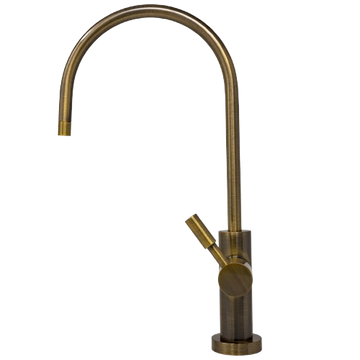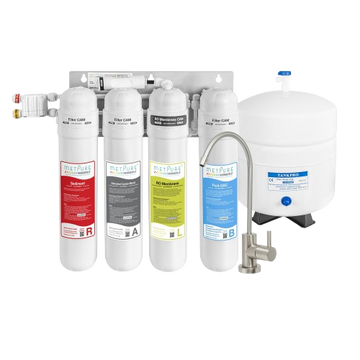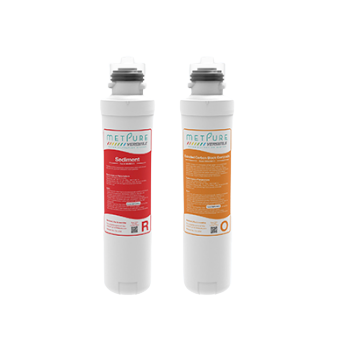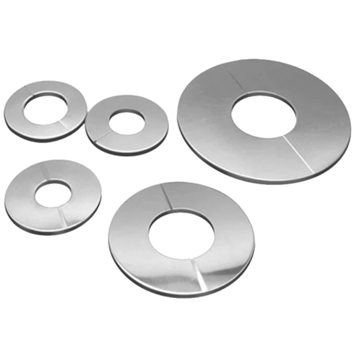Introduction
Rusty taps might not catch your attention until they become stubbornly jammed. To prevent this inconvenience, it's best to address rust early on rather than waiting for it to worsen.
While many turn to household remedies like vinegar and lemon juice, for a swift and effortless rust removal solution, there’s an easier and more convenient solution available: WD-40 Rust Remover!
In this article, we’ll cover:
- What is WD-40 Rust Remover?
- Vinegar vs. WD-40 Rust Remover
- Main Causes of Rust
- How to Use WD-40 To Remove Rust from Taps?
- Other surfaces you can use WD-40 on
What is WD-40 Rust Remover?
Comprised of petroleum-based oil, aliphatic hydrocarbon, and carbon dioxide, WD-40's formula also includes 50% mineral spirits, a versatile solvent blend derived from petroleum compounds.
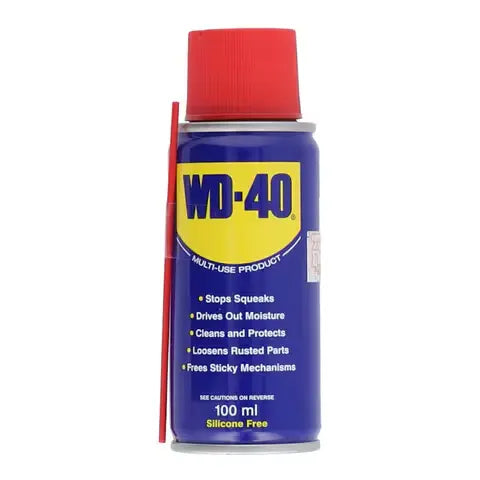
WD-40 Specialized Rust Remover is a versatile solution for removing rust from various metals such as iron, chrome, and stainless steel. It effectively eliminates rust without causing damage to the surface or removing paint. Acting as both a light oil and solvent, WD-40 creates a slick layer that facilitates the easy removal of loose corrosion with a simple wipe on a rag.
For more intensive rust removal needs, WD-40 Specialist Rust Remover Soak offers a powerful formula that swiftly dissolves rust from metal surfaces, restoring them to their bare state without the need for scraping, chipping, or scrubbing.
Check out: Pro Tips for Ensuring Long-Lasting Fittings
Originally developed for aerospace applications to prevent corrosion on spacecraft, WD-40 has proven its effectiveness over time. The WD-40 EZ-REACH variant is particularly suited for addressing light rust issues, featuring an 8-inch flexible straw that aids in accessing challenging-to-reach areas.
Vinegar vs. WD-40 Rust Remover
Now, one popular DIY method to clean taps involves using vinegar to tackle the stubborn white buildup often found on shower heads and faucets in homes with hard water.
The process is straightforward: submerge the affected area in white vinegar by placing a plastic bag filled with vinegar over the shower head or wrapping paper towels soaked in vinegar around the faucet.
However, while vinegar is hailed as a chemical-free solution, its acidic nature poses a risk to chrome finishes. Extended exposure, particularly beyond 15 minutes, can lead to damage by eroding the finish.
But WD-40 is a mixture of light oil and solvent, it poses no harm to your favorite faucets!
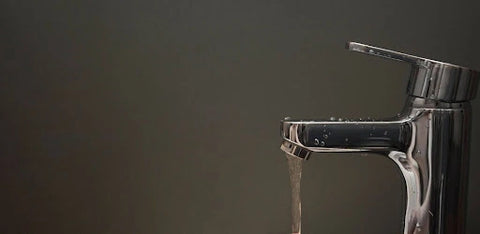
What are the Main Causes of Rust on Taps?
Understanding the root causes of rust on taps is crucial for effective prevention.
Here are the main factors that contribute to rust formation on your trust taps!
Exposure to moisture accelerates rust formation by reacting with metal to create iron oxide. High humidity levels exacerbate this process which is why you should always keep your metals dry.
Residues from manufacturing processes and airborne contaminants can contribute to rust formation if left untreated on metal surfaces.
Saltwater environments are highly corrosive, leading to rapid rust formation on metal parts, particularly in marine equipment and coastal areas.
Fingerprints deposit salts on metal surfaces, accelerating electrochemical reactions, particularly in humid conditions.
Low-quality metal is more prone to rust due to impurities or inadequate rust inhibitors. That’s why you should always buy from a trustworthy high-quality source!
Regular maintenance is essential for rust prevention, as neglecting metal parts can lead to rust buildup and subsequent damage.
Certain chemicals can react with metal, compromising its protective surface and facilitating rust formation.
Overall, you should keep your taps dry, away from chemicals, and clean to prevent rust formation!
How to Use WD-40 To Remove Rust?
Here's a step-by-step guide on how to effectively use WD-40 to remove rust from your taps:
- Ensure the item is completely covered in the WD-40 multi-use product. Although WD-40 is known for various applications, including rust removal, it's crucial to ensure thorough coverage of the rusted surface.
- Allow the WD-40 solution to penetrate and loosen the rust by waiting a full 10 minutes. This waiting period is essential for the solution to work effectively in breaking down the rust.
- After the designated time, use a brush to scrub the rusted area. Opt for a wire or steel brush for optimal results. However, consider using a softer-bristled brush for your faucet and its accessories to prevent scratching.
- Scrub the rusted surface until the rust breaks apart and loosens from the metal. The WD-40 solution facilitates this process by cutting through and dissolving the rust, restoring the surface to bare metal.
- Once satisfied with the result, wipe off the loosened rust residue. You should notice that the rust comes off easily, leaving your tap clean and restored.
By following these steps, you can effectively use WD-40 multi-use products to remove rust and restore metal surfaces to their original condition.
Are there other surfaces you can use WD-40 on?
Yes! In fact, you can use WD-40 Rust Remover on tons of things in your bathroom. But before that, don’t forget to check out this article on Alkaline Water Fiters – 2024 guide.
Now, here are some ways you can use it to keep your bathroom shiny and clean.
- Coffee or tea stains left on bathroom counters can be unsightly but easily removed with WD-40. Apply a small amount of WD-40 to the stains and let it sit for a few minutes. Afterward, wipe away with a damp sponge or cloth for a refreshed counter surface.
- To tackle hard water stains and soap scum on glass shower surfaces, generously spray WD-40 over the affected areas. Allow it to sit for 15 to 30 minutes, then wipe clean with microfiber towels. The water-displacement properties of WD-40 help prevent future residue buildup.
- For tile grout cleaning, use WD-40 with cans featuring slim straw nozzles for precise application. Direct the spray onto the grime and allow it to sit for a few minutes before rinsing with soap and water. While WD-40 isn't explicitly recommended for mold removal, it can help to prevent its return after initial removal with a dedicated mold removal product.
- Over time, plastic items in bathrooms, such as toilet seat covers and trim, can fade. Restore their appearance by applying WD-40 to the faded plastic surfaces. Similar to how it rejuvenates outdoor plastic furniture, WD-40 can provide a second life to indoor bathroom plastic items.
By following these steps, you can effectively use WD-40 for various bathroom cleaning tasks, from removing stains to revitalizing faded plastic items!

